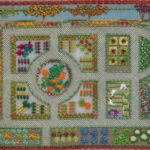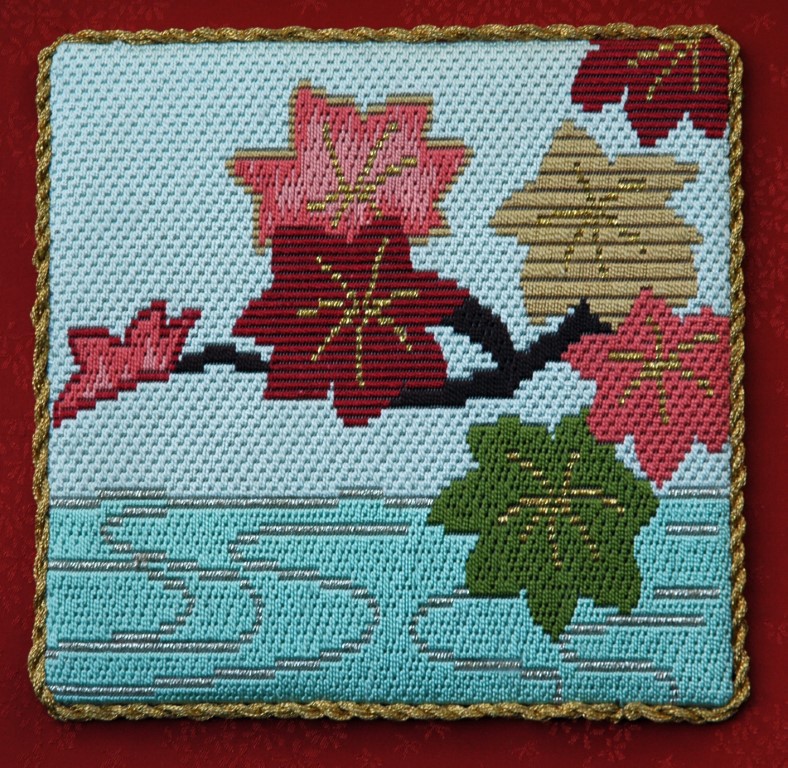Technique: German Schwalm
Place of Origin: The Schwalm region of the Hesse Province of West-Central Germany
Earliest approximate date: middle 18th century
History: German Schwalm, or Schwalm Whitework (Schwälmer Weißstickerei) originated in the Schwalm Region in west-central Germany, so called because of its proximity to the river Schwalm. Schwalm embroidery is a type of whitework embroidery that incorporates drawn and pulled thread techniques, as well as surface embroidery techniques.
German Schwalm as we know it today began around the beginning of the 19th century. However, “Early Schwalm Whitework” originated around the 18th century. Early Schwalm Whitework is very similar to the Schwalm Whitework familiar to embroiderers today, with a few notable exceptions. Early Schwalm Whitework foregoes coral knot stitch for outlining in favor of stem stitch outlines; often utilizes smaller shapes versus the larger shapes of later Schwalm Whitework; and features more surface embroidery, and fewer drawn thread motifs.
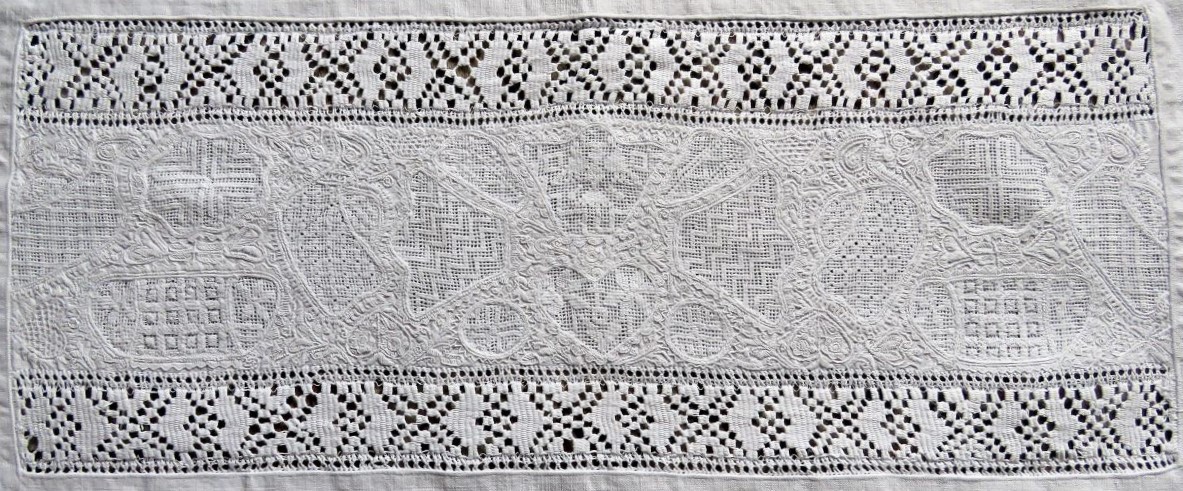
German Schwalm is often cited as the rural response to “Dresden whitework,” a form of pulled thread whitework embroidery worked on very fine cotton or muslin. Dresden whitework was expensive and popular among the elite class (interestingly, Dresden whitework was originally developed as a less expensive alternative to bobbin and needle lace!). Schwalm whitework, then, was developed as an even more affordable alternative that became popular among the peasant class.

Schwalm featured decoratively in garments for men, women, and children (notably seen in bodices, sleeves, and hems), and in pieces for the home like bed and pillow covers, towels, window treatments, and table linens. Phyllis Maurer notes in her Techniques of German Schwalm that early examples of Schwalm whitework are notoriously difficult to find because of the utility of the items in which the technique is featured; so many of these functional pieces, completed by peasant women for use in their homes and their family’s lives, have not survived the heavy use of day to day life.
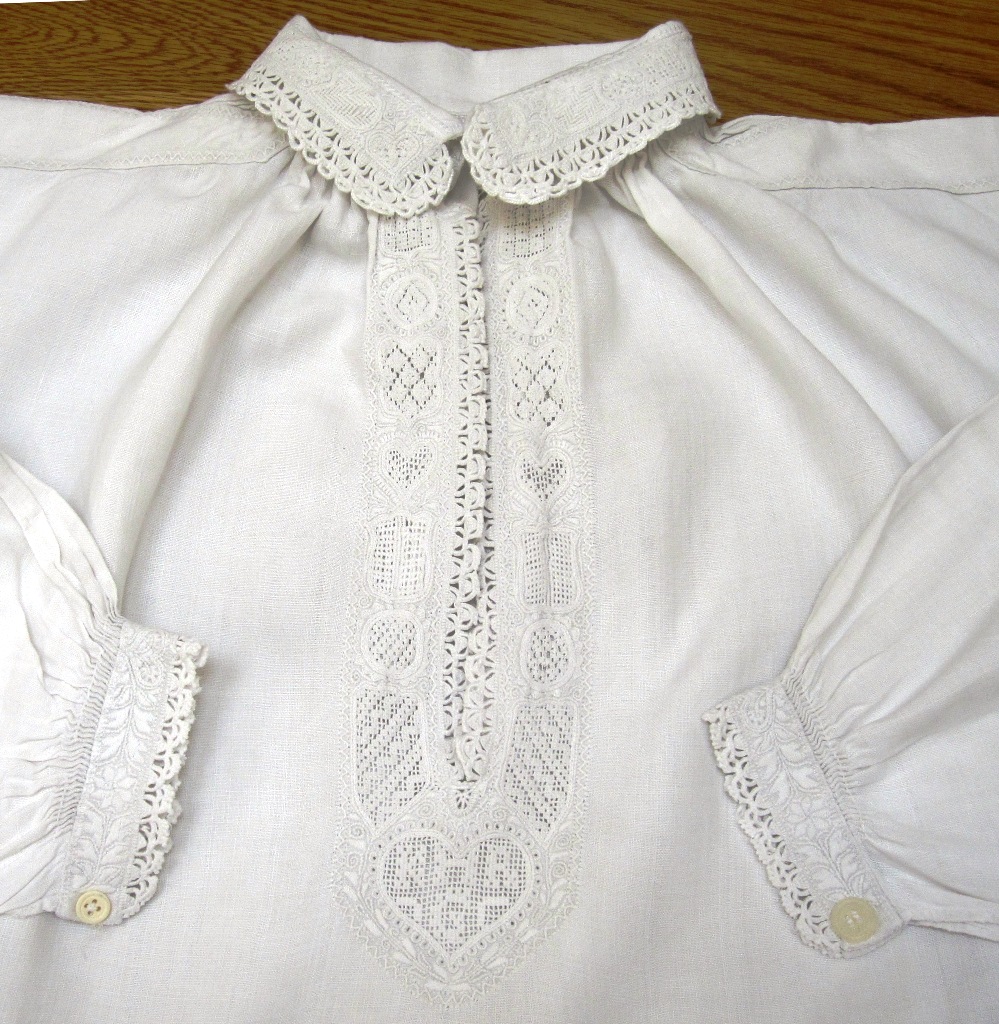
Schwalm may be a whitework technique, however, there are instances of Schwalm that feature color. Some pieces were dyed with indigo, and one can also find examples featuring colored thread as an accent, often red.
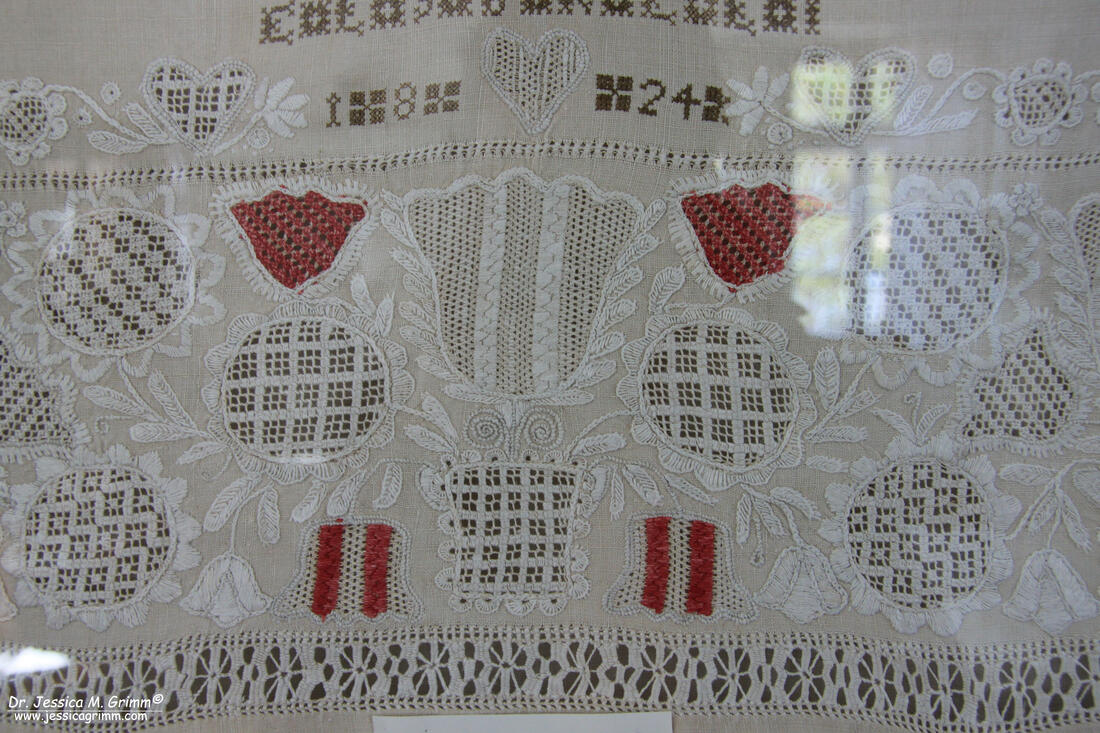
Materials, Techniques, and Stitches:
German Schwalm is usually worked with Coton o broder on an even weave of white linen ground. Ground cloth of fine count linen with a close weave ensures stability and uniformity. For needles, Crewel or Chenille work best for securing stitches, while tapestry needles work best for needle weaving. Schwalm utilizes whitework, both drawn and pulled thread techniques, and counted thread techniques. Schwalm whitework features various filling stitches to create unique motifs.
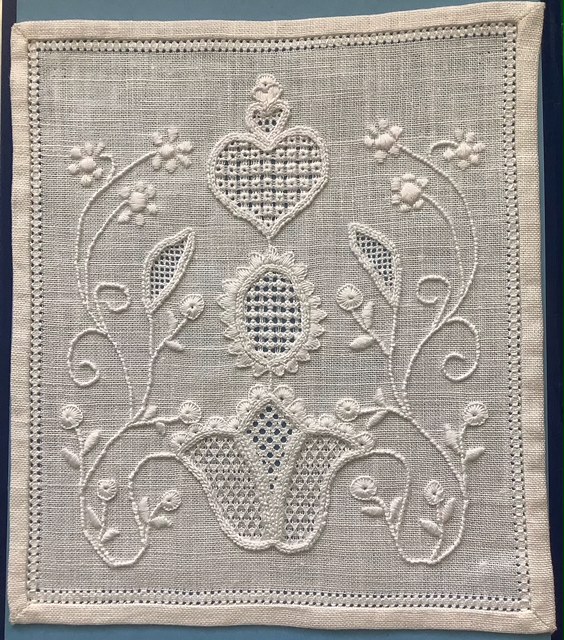
In Schwalm, embroiderers first use chain stitch and coral knot stitch to form strong, bold, reinforced outlines, around which they will then create drawn and/or pulled thread work. Buttonhole stitch, satin stitch, blanket stitch, herringbone and other embroidery stitches feature as filling stitches and surface embroidery.
German Schwalm’s motifs were heavily informed by the rural, Protestant class of the Schwalm region. Folk designs featured flowers (particularly tulips), hearts, leaves, baskets, doves, tendrils, the tree of life, fruits, and stars.
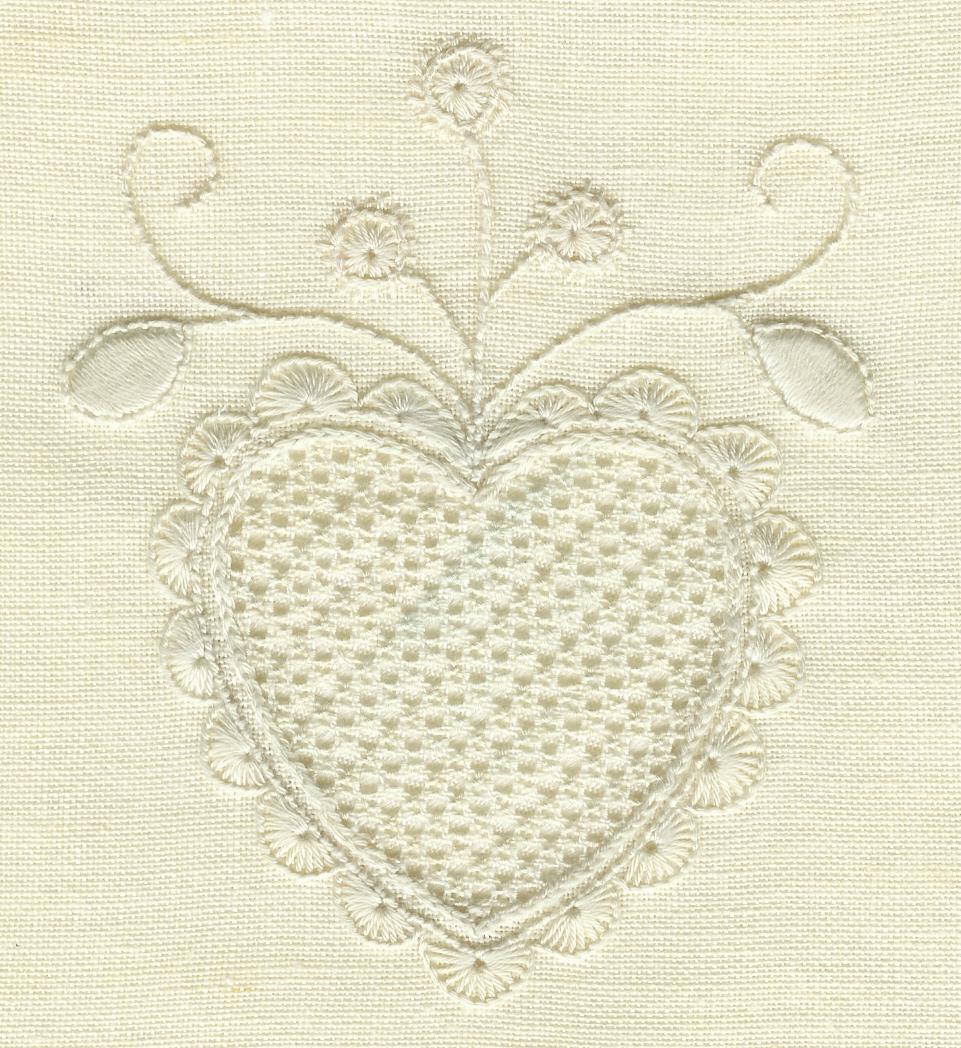
Interested in exploring German Schwalm embroidery techniques? EGA offers several courses on whitework techniques, as well as downloadable resources from Phyllis Maurer!

Sources
Maurer, P. Techniques of German Schwalm — Ethnic Textile Art. EGA. https://egausa.org/product/german-schwalm-phyllis-maurer/
(n.d.). Schwalm Whitework. Luzine Happel. https://www.luzine-happel.de/
(n.d.). Schwalm Embroidery. Textile Research Centre. https://trc-leiden.nl/trc-needles/regional-traditions/europe-and-north-america/embroideries/schwalm-embroidery
(n.d.). Schwalm Whitework Embroidery: Book Review. Mary Corbett’s Needle ‘n Thread. https://www.needlenthread.com/2008/08/schwalm-whitework-embroidery-book.html
(n.d.). The Symbolism of the Motifs Found in Schwalm Embroidery. Luzine Happel. https://www.luzine-happel.de/?p=14948&lang=en
(n.d.). The History of Schwalm Whitework. Luzine Happel. https://www.luzine-happel.de/?page_id=21&lang=en

